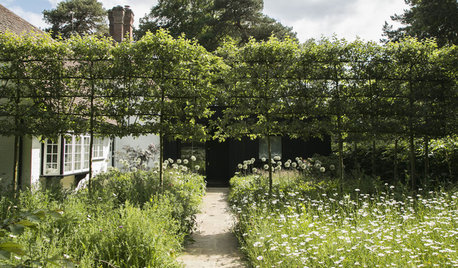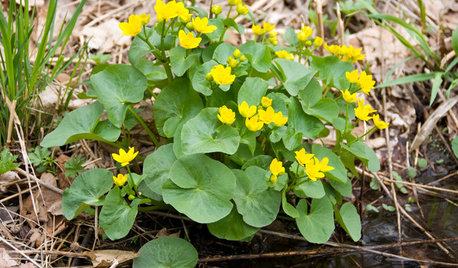Planting apple trees in the marsh
wireman54302
10 years ago
Related Stories

GARDENING AND LANDSCAPINGCrab Apple Trees Set Off a Stylish English Courtyard
A structure of pleached crab apple trees, bordered by a wildflower meadow, links a minimalist addition to an old house in Buckinghamshire
Full Story
EDIBLE GARDENSHow to Add an Apple Tree to Your Edible Garden
Readily available, beautiful and fragrant, apple trees offer four-season interest along with crisp, juicy fruit
Full Story
GARDENING GUIDESPlant Black Cherry Trees for the Birds and Bees
Plant Prunus serotina in the Central and Eastern U.S. for spring flowers, interesting bark and beautiful fall color
Full Story
ARBOR DAY8 Reasons to Plant a Great Tree
Beauty is its own reward, but the benefits of planting the right tree in the right place go way beyond looks
Full Story
TREES7 Deer-Resistant Flowering Trees to Plant this Fall
If you live in a neighborhood with roaming deer, consider these beautiful trees that won't tempt hungry guests
Full Story
GARDENING GUIDES10 Top California Native Plants, Trees and Grasses
Enjoy a fuss-free, water-wise garden in the Golden State by growing plants naturally in tune with the climate and wildlife
Full Story
GARDENING AND LANDSCAPINGCrazy for Fruit Trees
Whether a single citrus or a mini apple orchard, even the smallest landscape space can bear deliriously delicious fruit
Full Story
NATIVE PLANTSGreat Design Plant: Caltha Palustris Is a Welcome Sign of Spring
Brighten your rain garden or pond edge in spring with marsh marigold
Full Story
EDIBLE GARDENSHow to Grow 10 Favorite Fruit Trees at Home
Plant a mini orchard in fall, winter or early spring to enjoy fresh-off-the-tree fruit the following year
Full Story
GARDENING GUIDESGreat Design Plant: Sambucus Nigra
Common elderberry is a highly adaptable shrub from the eastern U.S., with berries galore for wildlife and humans alike
Full StorySponsored
Columbus Area's Luxury Design Build Firm | 17x Best of Houzz Winner!
More Discussions







hoosierquilt USDA 10A Sunset 23 Vista CA
eboone_gw
Related Professionals
Camas Landscape Architects & Landscape Designers · South Elgin Landscape Architects & Landscape Designers · Mount Wilson Landscape Architects & Landscape Designers · Arlington Landscape Contractors · Barrington Landscape Contractors · Columbine Landscape Contractors · Deer Park Landscape Contractors · Franklin Landscape Contractors · Fridley Landscape Contractors · Galt Landscape Contractors · Hannibal Landscape Contractors · Kettering Landscape Contractors · Mashpee Landscape Contractors · North Lauderdale Landscape Contractors · Raytown Landscape ContractorsAmericanchestnut
fruitnut Z7 4500ft SW TX
murkwell
alan haigh
fireweed22
windfall_rob
alan haigh
Strawther